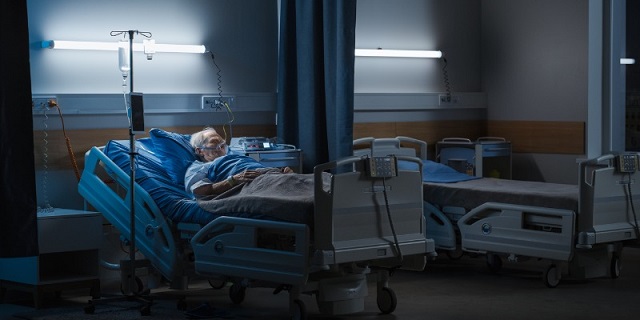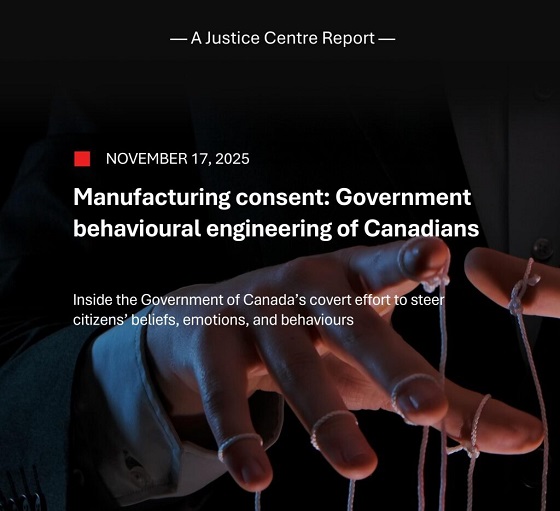Fraser Institute
Endless spending increases will not fix Canada’s health-care system

From the Fraser Institute
By Mackenzie Moir and Jake Fuss
Canada’s health-care system ranked as the most expensive (as a share of the economy) among 30 universal health-care countries. And despite these relatively high levels of spending, Canada continues to lag behind its peers on key indicators of performance.
In February 2023, the federal government announced the money they send to the provinces for health care would increase, yet again. Despite being billed as a fix for health care, these spending increases will not actually provide any relief for Canadian patients.
The Canada Health Transfer (CHT), the main federal financial tool for funding provincial health care, has increased from $34.0 billion in 2015/16 to $52.1 billion this year (2024/25), a 53.1 per cent increase in about a decade. Moreover, the federal government has committed to increases in the transfer at a guaranteed 5 per cent until 2027/28.
This latest increase in the CHT, however, is only one part of the $46.2 billion in new money being doled out over the next 10 years. More than half (roughly $25 billion) is currently being given to provinces who’ve signed up to work towards a number of “shared priorities” with Ottawa, such as mental health and substance abuse.
Clearly, the federal government has decided to substantially increase health-care spending in more than one way. But will it produce results?
These periodic “fixes” occasionally championed by Ottawa every few years are nothing new. And unfortunately, the data show that longstanding problems, including long waits for medical care and doctor shortages, will persist even though Canada is certainly no slouch when compared to its peers on health-care spending.
A recent study found that, when adjusted for differences in age (because older populations tend to spend more on health care), Canada’s health-care system ranked as the most expensive (as a share of the economy) among 30 universal health-care countries. And despite these relatively high levels of spending, Canada continues to lag behind its peers on key indicators of performance.
For example, Canada had some of the fewest physicians (ranked 28th of 30 countries), hospital beds (ranked 23rd of 29) and diagnostic technology such as MRIs (ranking 25th of 29 countries) and CT scanners (ranking 26th out of 30 countries) compared to other high-income countries with universal health care.
It also ranked at or near the bottom on measures such as same-day medical appointments, how easy it is to find afterhours care, and the timeliness of specialist appointments and surgical care.
And wait times have been getting worse. Just last year Canada recorded the longest ever delay for non-emergency care at 27.7 weeks, a 198 per cent increase from the 9.3 week wait experienced in 1993 (the first year national estimates were published).
But it’s not just the health-care system that’s in shambles, despite our high spending. Our federal finances are, too. Years of substantial increases in federal spending have strained the country’s finances. The Trudeau government’s latest budget projects a deficit of $39.8 billion this year, with more spent on debt interest ($54.1 billion) than on what the federal government gives to the provinces for health care.
Again, these periodic injections of federal funds to the provinces to supposedly fix health care are nothing new. Ottawa has relied on this strategy in the past and wait times have grown longer over the last three decades. Endless increases in spending will not fix our health-care system.
Authors:
Energy
Expanding Canadian energy production could help lower global emissions

From the Fraser Institute
By Annika Segelhorst and Elmira Aliakbari
Canada’s most timely opportunity to lower overall global emissions is through expanded exports to regions that rely on higher-emitting fuel sources.
The COP30 climate conference in Brazil is winding down, after more than a week of discussions about environmental policy and climate change. Domestic oil and natural gas production is frequently seen as a fundamental obstacle to Canada’s climate goals. Yet the data shows that Canadian energy production is already among the world’s cleanest, generating lower greenhouse gas (GHG) emissions per barrel-of-oil-equivalent produced, among major producing countries. Expanding the role of Canadian oil and gas in global markets can replace higher GHG-emitting alternatives around the world, driving down global GHG emissions.
Prime Minister Carney’s first budget highlights Canada’s “emissions advantage” in a chart on page 105 that compares the amount of GHG emissions released from producing oil and natural gas across 20 major producing countries. Compared to many other top-producing countries, Canada releases fewer GHG emissions per barrel of oil and gas produced when considering all phases of production (extraction, processing, transport, venting and flaring).
For oil production, Canada has an advantage over most major producers such as Venezuela, Libya, Iran, Algeria, Nigeria, China, Russia and Qatar. Canada’s emissions per barrel of oil produced are below the global average, making Canada among the lower emitting producers worldwide.
Similarly, Canada’s natural gas production has an emissions per barrel equivalent that is lower than the global average and is below major producers such as Turkmenistan, Uzbekistan, Nigeria, Indonesia, China, Argentina, Malaysia, Australia, Algeria, Iran, Russia, India and the United States. The chart below reveals countrywide average GHG emissions per barrel of oil or natural gas produced in 2022.
Source: International Energy Agency (2023), The Oil and Gas Industry in Net Zero Transitions 2023, IEA, Paris, p. 69
Canada’s emissions advantage stems from years of technological innovations that require less energy to produce each barrel of oil along with improvements in detecting leaks. From 1990 to 2023, Canada’s total production of crude oil rose by 199 per cent, while emissions per barrel of oil produced declined by 8 per cent, according to Environment and Climate Change Canada (ECCC). In the oilsands, since 1990 emissions per barrel have fallen by nearly 40 per cent while emissions from natural gas production and processing have decreased by 23 per cent.
Canada has already implemented many of the most practical and straightforward methods for reducing carbon emissions during oil and gas production, like mitigation of methane emissions. These low-hanging fruits, the easiest and most cost-effective ways to reduce emissions, have already been implemented. The remaining strategies to reduce GHG emissions for Canadian oil and gas production will be increasingly expensive and will take longer to implement. One such approach is carbon capture, utilization, and storage (CCUS), a technology which traps and stores carbon dioxide to prevent it from reaching the atmosphere. Major infrastructure projects like this offer potential but will be difficult, costly and resource intensive to implement.
Rather than focusing on increasingly expensive emission reductions at home, Canada’s most timely opportunity to lower overall global emissions is through expanded exports to regions that rely on higher-emitting fuel sources. Under a scenario of expanded Canadian production, countries that presently rely on oil and gas from higher-emitting producers can instead source energy from Canada, resulting in a net reduction in global emissions. Conversely, if Canada were to stagnate or even retreat from the world market for oil and gas, higher-emitting producers would increase exports to accommodate the gap, leading to higher overall emissions.
As Canada’s climate and energy policy continues to evolve, our attention should focus on global impact rather than solely on domestic emissions reductions. The highest environmental impact will come from enabling global consumption to shift towards lower-emitting Canadian sources.
Business
Canada is failing dismally at our climate goals. We’re also ruining our economy.

From the Fraser Institute
By Annika Segelhorst and Elmira Aliakbari
Short-term climate pledges simply chase deadlines, not results
The annual meeting of the United Nations Conference of the Parties, or COP, which is dedicated to implementing international action on climate change, is now underway in Brazil. Like other signatories to the Paris Agreement, Canada is required to provide a progress update on our pledge to reduce greenhouse gas (GHG) emissions by 40 to 45 per cent below 2005 levels by 2030. After decades of massive government spending and heavy-handed regulations aimed at decarbonizing our economy, we’re far from achieving that goal. It’s time for Canada to move past arbitrary short-term goals and deadlines, and instead focus on more effective ways to support climate objectives.
Since signing the Paris Agreement in 2015, the federal government has introduced dozens of measures intended to reduce Canada’s carbon emissions, including more than $150 billion in “green economy” spending, the national carbon tax, the arbitrary cap on emissions imposed exclusively on the oil and gas sector, stronger energy efficiency requirements for buildings and automobiles, electric vehicle mandates, and stricter methane regulations for the oil and gas industry.
Recent estimates show that achieving the federal government’s target will impose significant costs on Canadians, including 164,000 job losses and a reduction in economic output of 6.2 per cent by 2030 (compared to a scenario where we don’t have these measures in place). For Canadian workers, this means losing $6,700 (each, on average) annually by 2030.
Yet even with all these costly measures, Canada will only achieve 57 per cent of its goal for emissions reductions. Several studies have already confirmed that Canada, despite massive green spending and heavy-handed regulations to decarbonize the economy over the past decade, remains off track to meet its 2030 emission reduction target.
And even if Canada somehow met its costly and stringent emission reduction target, the impact on the Earth’s climate would be minimal. Canada accounts for less than 2 per cent of global emissions, and that share is projected to fall as developing countries consume increasing quantities of energy to support rising living standards. In 2025, according to the International Energy Agency (IEA), emerging and developing economies are driving 80 per cent of the growth in global energy demand. Further, IEA projects that fossil fuels will remain foundational to the global energy mix for decades, especially in developing economies. This means that even if Canada were to aggressively pursue short-term emission reductions and all the economic costs it would imposes on Canadians, the overall climate results would be negligible.
Rather than focusing on arbitrary deadline-contingent pledges to reduce Canadian emissions, we should shift our focus to think about how we can lower global GHG emissions. A recent study showed that doubling Canada’s production of liquefied natural gas and exporting to Asia to displace an equivalent amount of coal could lower global GHG emissions by about 1.7 per cent or about 630 million tonnes of GHG emissions. For reference, that’s the equivalent to nearly 90 per cent of Canada’s annual GHG emissions. This type of approach reflects Canada’s existing strength as an energy producer and would address the fastest-growing sources of emissions, namely developing countries.
As the 2030 deadline grows closer, even top climate advocates are starting to emphasize a more pragmatic approach to climate action. In a recent memo, Bill Gates warned that unfounded climate pessimism “is causing much of the climate community to focus too much on near-term emissions goals, and it’s diverting resources from the most effective things we should be doing to improve life in a warming world.” Even within the federal ministry of Environment and Climate Change, the tone is shifting. Despite the 2030 emissions goal having been a hallmark of Canadian climate policy in recent years, in a recent interview, Minister Julie Dabrusin declined to affirm that the 2030 targets remain feasible.
Instead of scrambling to satisfy short-term national emissions limits, governments in Canada should prioritize strategies that will reduce global emissions where they’re growing the fastest.

Elmira Aliakbari
-

 COVID-197 hours ago
COVID-197 hours agoNew report warns Ottawa’s ‘nudge’ unit erodes democracy and public trust
-

 Bruce Dowbiggin2 days ago
Bruce Dowbiggin2 days agoBurying Poilievre Is Job One In Carney’s Ottawa
-

 Health2 days ago
Health2 days agoDisabled Canadians petition Parliament to reverse MAiD for non-terminal conditions
-

 Great Reset2 days ago
Great Reset2 days agoEXCLUSIVE: A Provincial RCMP Veterans’ Association IS TARGETING VETERANS with Euthanasia
-

 Daily Caller2 days ago
Daily Caller2 days agoSpreading Sedition? Media Defends Democrats Calling On Soldiers And Officers To Defy Chain Of Command
-

 Crime1 day ago
Crime1 day agoHow Global Organized Crime Took Root In Canada
-

 COVID-192 days ago
COVID-192 days agoCovid Cover-Ups: Excess Deaths, Vaccine Harms, and Coordinated Censorship
-

 Digital ID2 days ago
Digital ID2 days agoLeslyn Lewis urges fellow MPs to oppose Liberal push for mandatory digital IDs








